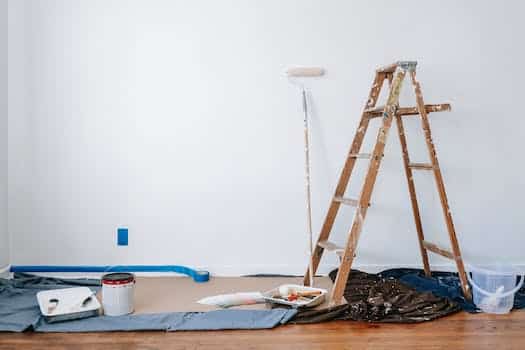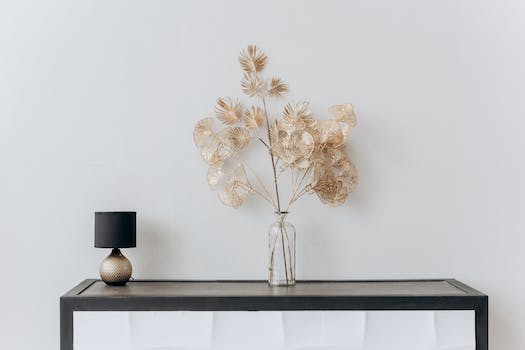Painting furniture can be a fun and gratifying DIY job, but it can also be difficult to achieve the desired professional look. With these ten steps, you can create a faultless finish that will make your furniture look professional. These instructions will help you get the job done perfectly, from selecting the right paint to prepping your surface and applying the final coat. So grab your paintbrush and get ready to turn your furniture into a work of art!
- 1. Painting Furniture Tips
- 1.1. Preparation is Key
- 1.2. Choosing the Right Paint
- 1.3. Sanding and Priming
- 1.4. Painting Techniques
- 1.5. Finishing Touches
- 2. Preparation is Key
- 2.1. Cleaning the Surface
- 2.2. Repairing Damage
- 2.3. Removing Old Paint
- 2.4. Masking Off Areas
- 2.5. Setting Up Your Work Area
- 3. Choosing the Right Paint
- 3.1. Understanding Paint Types
- 3.2. Selecting the Right Sheen
- 3.3. Picking a Color
- 3.4. Considering the Environment
- 3.5. Reading the Label
- 4. Sanding and Priming
- 4.1. Sanding Techniques
- 4.2. Using a Tack Cloth
- 4.3. Applying Primer
- 4.4. Allowing Time to Dry
- 4.5. Sanding Between Coats
- 5. Painting Techniques
- 5.1. Brushing vs. Spraying
- 5.2. Choosing the Right Brush
- 5.3. Applying Thin Coats
- 5.4. Managing Drips and Runs
- 5.5. Painting in the Right Conditions
- 6. Finishing Touches
- 6.1. Removing Masking Tape
- 6.2. Touching Up Edges
- 6.3. Applying a Sealant
- 6.4. Polishing the Surface
- 6.5. Reassembling the Furniture
1. Painting Furniture Tips
Painting furniture can be an inexpensive way to improve the aesthetic of your house. However, there are a few things to keep in mind if you want to obtain a professional-looking finish. Before painting, make sure to clean and sand the surface of the furniture. This will help the paint adhere properly and prevent future chipping or peeling. Second, to achieve a smooth and even finish, use high-quality paint and primer. Third, for larger pieces of furniture, consider using a paint sprayer to produce a more professional look. Fourth, don’t speed through the procedure; let each layer of paint completely dry before applying the next. Fifth, for an ultra-smooth finish, softly sand the surface between applications using fine-grit sandpaper. Sixth, add a clear coat of sealer to preserve the paint and increase longevity. Seventh, remember to remove any hardware or handles before painting and replace them once the paint has dried completely. Eighth, use drop cloths to protect your work space and use safety gear such as gloves and a mask. Ninth, try with different colors and techniques, such as distressing or stenciling, to give your furniture a distinct personality. Tenth, have fun while transforming your furniture into something fresh and attractive!
1.1. Preparation is Key
It is critical to carefully prepare the surface before painting your furniture. This entails thoroughly washing and sanding the furniture to create a smooth surface for the paint to adhere to. Remove any hardware or fixtures from the furniture and cover any sections that you do not want to paint using painter’s tape or plastic sheeting. Taking the time to prepare your furniture before painting can ensure a professional-looking result.
1.2. Choosing the Right Paint
Choosing the appropriate type of paint for painting furniture is critical for getting a professional look. There are various types of paint available, including latex, oil-based, and chalk paint. Latex paint is a popular choice since it dries rapidly and cleans up easily. Oil-based paint lasts longer and has a smoother surface, but it takes longer to cure and requires solvents to clean off. The matte surface of chalk paint is ideal for generating a vintage or shabby chic effect.
1.3. Sanding and Priming
It is critical to sand and prime the surface of your furniture before painting it. Sanding the furniture smooths out any lumps or rough places, preparing the surface for painting. Sand the surface with fine-grit sandpaper until it is even. Wipe the surface clean with a moist cloth after sanding to remove any dust or dirt. Apply a coat of primer to the furniture next. The primer will aid in the adhesion of the paint to the surface and will prevent any stains or discolouration from bleeding through. Allow the primer to dry completely before beginning to paint.
1.4. Painting Techniques
When it comes to painting furniture, a few approaches can make a significant difference in the end product. Sanding the surface before painting is an important practice. This will improve paint adhesion and result in a smoother finish. Another method is to use a primer before painting the furniture, especially if it has a shiny or dark finish. This will assist the paint adhere to the surface and prevent bleed-through. Using a high-quality brush or roller can also make a significant difference in the final appearance of the furniture. Finally, use a sealer or topcoat to preserve the paint and increase longevity.
1.5. Finishing Touches
Don’t forget about the finishing touches once you’ve completed painting your furniture piece. These minor elements can have a significant impact on the overall appearance of your project. Before applying any further finishes, ensure that the paint has completely dried. Consider adding a clear coat or varnish to preserve the paint and add shine for a smooth and finished appearance. If you want a more rustic or vintage appearance, softly sand the painted surface with fine-grit sandpaper. This will give your furniture a worn and weathered look. Finally, don’t forget to incorporate any hardware or embellishments that will complement the overall look of your piece. These finishing touches, whether knobs, handles, or ornate trim, can transform your painted furniture from plain to stunning.
2. Preparation is Key
It is critical to carefully prepare the surface before painting your furniture. This includes removing any dirt or filth from the surface, sanding down any rough spots, and filling up any cracks or holes. The better the surface preparation, the smoother and more professional the end result will appear.
2.1. Cleaning the Surface
It is critical to carefully clean the surface before beginning any furniture painting project. Wash the surface with a light detergent and warm water, then rinse with clean water. Allow the furniture to completely dry before proceeding to the next step.
2.2. Repairing Damage
Before you begin painting your furniture, make sure it is free of flaws. Scratches, dents, and even missing pieces may be present. Preventing damage will result in a smoother, more professional-looking finish. Fill up any cracks or holes with wood filler and smooth down any rough spots. If any pieces are missing, try to acquire replacements or consider incorporating decorative embellishments to conceal the defect.
2.3. Removing Old Paint
Remove any old paint or finish from the surface of the furniture before painting it. This can be accomplished using a variety of means, including as sanding, chemical strippers, or heat guns. The most popular procedure is sanding, which entails removing the previous paint with sandpaper or a sanding block. Chemical strippers can be helpful, but they are also harsh and must be used with caution. Another method is to utilize heat guns, however they might be harmful if not used properly. Wear protective equipment and follow all safety measures regardless of the approach you choose.
2.4. Masking Off Areas
Before you begin painting, it is critical to mask off any parts that you do not want to be painted. This includes any hardware or ornamental components that should remain in their original finish. To preserve these areas and ensure neat lines, use painter’s tape. Take your time and be accurate, as sloppy work will show after the paint has dried.
2.5. Setting Up Your Work Area
It is critical to carefully prepare your work area before beginning to paint your furniture. Check that you have enough space to move around and that the environment is well-ventilated. To protect your flooring from drips and spills, lay down a drop cloth or an old sheet. Collect all of your materials, including sandpaper, brushes, paint, and any other things you may require. Having everything close at hand will save you time and prevent disruptions during the painting process.
3. Choosing the Right Paint
When painting furniture, it is critical to use the correct sort of paint. Oil-based paint, acrylic paint, and chalk paint are just a few of the alternatives. Oil-based paint is long-lasting and glossy, but it takes a long time to dry. Acrylic paint dries quickly and easily, although it may take numerous layers for full coverage. Because it takes little to no prep work and dries rapidly, chalk paint is a popular choice for furniture painting. When selecting the correct paint for your project, keep the look and longevity in mind.
3.1. Understanding Paint Types
It is critical to understand the many types of paint available before selecting the proper paint for your furniture. Paint is classified into three types: oil-based, water-based, and latex. Oil-based paints are well-known for their durability and ability to provide a glossy surface, but they require solvents to clean and have a longer drying period. Water-based paints, often known as acrylics, are easy to clean and dry rapidly, although they are not as long-lasting as oil-based paints. Latex paints are a form of water-based paint that is popular for furniture because of their flexibility and durability. Knowing the advantages and disadvantages of each type of paint can assist you in making an informed decision when selecting the proper paint for your furniture project.
3.2. Selecting the Right Sheen
When it comes to painting furniture, the proper sheen is just as crucial as the appropriate paint hue. A paint’s sheen refers to its level of glossiness or shine. Different sheens can produce various effects and fulfill various functions. A high gloss sheen, for example, might give a sleek and sophisticated design, but a matte sheen can provide a more subdued and rustic impression. Consider the aesthetic and function of the piece when choosing the correct finish for your furniture project. A high traffic location may benefit from a more durable and washable shine, whilst a vintage piece may benefit from a matte surface.
3.3. Picking a Color
Consider the general color scheme of the room when selecting a color for your furnishings. Choose a bright color that contrasts with the walls and other decor if you want your furniture to stand out. Choose a hue that fits in with the rest of the space for a more coherent look. Consider the vibe you want to create in the space as well. Blue, for example, is believed to have a relaxing impact, whilst red can evoke feelings of energy and excitement.
3.4. Considering the Environment
It is critical to consider the setting in which your furniture will be situated when selecting the correct paint for it. Is the furniture going to be in a high-traffic area, or will it be exposed to sunshine or moisture? If this is the case, you should consider choosing a paint that is specifically intended for those conditions. If you’re concerned about the environmental impact of your painting endeavor, search for low-VOC (volatile organic compound) or eco-friendly paints.
3.5. Reading the Label
Before selecting the proper paint for your furniture, read the label on the paint can. Look for details on the paint type (oil-based or water-based), the finish (matte, satin, or gloss), and the recommended application method (brush, roller, or spray). Before applying the paint, make sure to check to see if it requires any extra preparation or priming.
4. Sanding and Priming
Before painting furniture, it is critical to carefully prepare the surface by sanding and priming. Sanding eliminates any previous finish or rough places, making it easier for the paint to adhere. Begin with a coarse grit sandpaper and work your way up to a finer grain. Wipe the surface down with a moist cloth after sanding to remove any dust. Then, use a primer to produce a smooth and even base for the paint. Allow the primer to thoroughly dry before proceeding to the next step.
4.1. Sanding Techniques
It is critical to sand your furniture well before priming it. Begin by removing any bumps, scratches, or old finishes with a coarse grain sandpaper (about 80-100 grit). Sand along the direction of the wood grain, making sure to cover the entire surface evenly. Switch to a finer grit sandpaper (about 120-150 grit) and sand again after the surface feels smooth to the touch. This will result in a smooth, prime-ready surface.
4.2. Using a Tack Cloth
It is critical to use a tack cloth to remove any dust and dirt after sanding the furniture piece. This will help you achieve a smooth and even finish while applying primer and paint. Simply unfold the tack cloth and wipe down the entire surface, being careful to get into any gaps or corners. Avoid pushing too hard, since this might cause residue to form on the surface. When the tack cloth becomes too soiled or loses its stickiness, discard it.
4.3. Applying Primer
Before painting your furniture, you should sand it down and apply a primer. Primer improves paint adhesion and results in a smoother finish. Choose a primer that is appropriate for the sort of paint you intend to use. Apply the primer with a brush or roller in thin, even applications and let it dry fully before painting.
4.4. Allowing Time to Dry
Allowing enough time for each coat of paint to cure completely is one of the most crucial elements in obtaining a professional-looking paint job on furniture. This procedure should not be rushed because it can result in uneven coverage, drips, and smudges. It’s best to wait at least 24 hours between coats of paint and 48 hours before putting a topcoat or using the piece of furniture. It is also critical to ensure that the room is well-ventilated and that the temperature is appropriate for the type of paint being used.
4.5. Sanding Between Coats
It is critical to sand between layers of paint after priming your furniture. This aids in the creation of a smooth surface by removing any defects or lumps. Lightly sand the surface with fine-grit sandpaper, wiping away any dust before applying the next coat of paint. Repeat for each layer of paint, and your finished product will seem professional and polished.
5. Painting Techniques
There are various strategies for painting furniture that can help you achieve a professional look. Here are several ideas to consider:
1. Sanding: Sand the surface before painting to provide a smooth and even base.
2. Primer: Using a primer helps the paint cling to the surface and last longer.
3. Brush vs. Spray: To obtain a smoother finish, use a brush for smaller items and a spray gun for bigger pieces.
4. Thin Layers: To eliminate drips and uneven surfaces, apply thin layers of paint rather than thick coats.
5. Drying Time: Allow each layer of paint to completely dry before adding the next.
6. Sanding between coats: To achieve a smooth surface, lightly sand between each application of paint.
7. Paint Type: Select the appropriate paint type for your project, such as chalk paint or latex paint.
8. Paint Sheen: To get the desired effect, consider the sheen of the paint, such as matte or glossy.
9. Pay attention to details like edges and corners to ensure they are completely covered.
10. Final Coat: To protect the paint and give it a finished aspect, apply a final coat of clear sealer.
5.1. Brushing vs. Spraying
When it comes to painting furniture, there are two methods to consider: brushing and spraying. Brushing is the application of paint to a surface using a paintbrush, whereas spraying is the application of a fine mist of paint with a spray gun. Both processes have advantages and disadvantages, and the one you use will depend on the sort of furniture you are painting as well as your particular preferences.
5.2. Choosing the Right Brush
When it comes to painting furniture, using the appropriate brush may make or break the professional look. Look for brushes with fine, synthetic bristles that are made for water-based paints. Consider using a roller brush for big areas to achieve even coverage. It’s also critical to choose a brush size that corresponds to the size of the furniture piece you’re painting. A smaller brush may be required for complex features and difficult-to-reach regions.
5.3. Applying Thin Coats
Applying thin layers of paint is one of the most important painting strategies to remember while painting furniture. This not only prevents drips and runs, but it also allows the paint to dry faster and more evenly. To apply thin coats, work in tiny parts with a high-quality brush or roller, applying a thin coating of paint and lightly smoothing out any brush traces or bubbles. Allow each application to thoroughly dry before adding more coats.
5.4. Managing Drips and Runs
Dealing with drips and runs is one of the most aggravating aspects of painting furniture. These are caused by having too much paint on the brush or roller, or by applying the paint too thickly. Use a high-quality brush or roller with a tapered edge to control drips and runs. This will allow you to better regulate the amount of paint you use. Also, before applying paint to the furniture, make sure to clean the brush or roller. Don’t be alarmed if you observe a drop or run. Simply allow the paint to dry before sanding it down with fine-grit sandpaper and adding another layer.
5.5. Painting in the Right Conditions
It is critical to paint your furniture in the proper conditions if you want it to seem professional. A dry, well-ventilated environment with a temperature range of 50-80 degrees Fahrenheit is best for painting. Avoid painting in regions with high humidity or excessive temperatures since the quality of your paint job will suffer.
It is also critical to carefully prepare your furniture before painting. This includes thoroughly cleaning the surface to eliminate any dirt or grime, sanding to smooth off any rough spots, and priming to ensure adequate paint adhesion.
6. Finishing Touches
It’s time to apply the finishing touches now that you’ve followed the 10 painting furniture recommendations for a professional look. The finish is one of the most significant parts of a professional-looking painted piece of furniture. Depending on the effect you want to achieve, you can add a glossy or matte finish. Applying a protective clear coat on your furniture will also assist to prevent it from wear and tear. Another finishing touch is to replace old hardware with new hardware, such as handles or knobs, to give your furniture a new look. Finally, consider adding some decorative components to your piece, such as stenciling or decoupage, to make it stand out and reflect your particular style.
6.1. Removing Masking Tape
When the paint has completely dry, remove the masking tape. Begin at one end and gradually peel it away at a 45-degree angle. If the tape begins to break or pull up paint, use a sharp utility knife to cut along the tape’s edge before removing it. For the clearest lines, remove the tape while the paint is still slightly tacky.
6.2. Touching Up Edges
After painting the bigger portions of your furniture, go back and touch up any edges or corners that were missed. Paint these spots lightly with a thin brush, being careful not to smudge the surrounding painted areas. This gives your furniture a glossy and professional appearance.
6.3. Applying a Sealant
Once the paint has completely dried, a sealer should be applied to protect your freshly painted furniture. There are various types of sealants on the market, including wax, polyurethane, and varnish. Wax has a matte texture that is perfect for rustic or old furniture. Polyurethane is a transparent, glossy sealer that gives a long-lasting finish in high-traffic areas. Varnish is similar to polyurethane, except it gives the furniture a slightly amber tint. Before applying the sealant, thoroughly clean the furniture and remove any dust or debris. Following the manufacturer’s recommendations, apply the sealant evenly with a brush or roller. Before utilizing the furniture, allow the sealant to dry completely.
6.4. Polishing the Surface
It is critical to carefully prepare the surface of your furniture before applying any paint or finish. This includes sanding any rough patches or defects, fixing any cracks or holes, and carefully cleaning the surface. Smooth up the surface with a fine grain sandpaper to provide a smooth basis for your paint or finish. Wipe down the surface with a moist cloth once you’ve completed sanding to eliminate any dust or dirt. This ensures that your paint or finish is properly adhered and appears professional.
6.5. Reassembling the Furniture
When the paint has completely dried, it’s time to reassemble the furniture. Begin by replacing any removed hardware, such as knobs, handles, or hinges. Make certain that they are tightly tightened. After that, reinstall the drawers or reattach the doors to their hinges. Check that everything is correctly aligned and level. If you have to disassemble any complicated elements, such as a table leg or a chair back, make sure you reassembled them correctly using your reference photographs or notes. Take your time and be patient because this phase can be tricky. Step back and appreciate your freshly painted furniture once everything is back in place!
Conclusion
Finally, by following these 10 painting furniture recommendations, you may give your furniture a professional and polished appearance. These techniques will help you achieve a beautiful and long-lasting product, from preparing the surface to selecting the correct paint and finish.






These 10 innovative and imaginative DIY home decor ideas from [object Object] provide a refreshing approach to enhancing ones living…